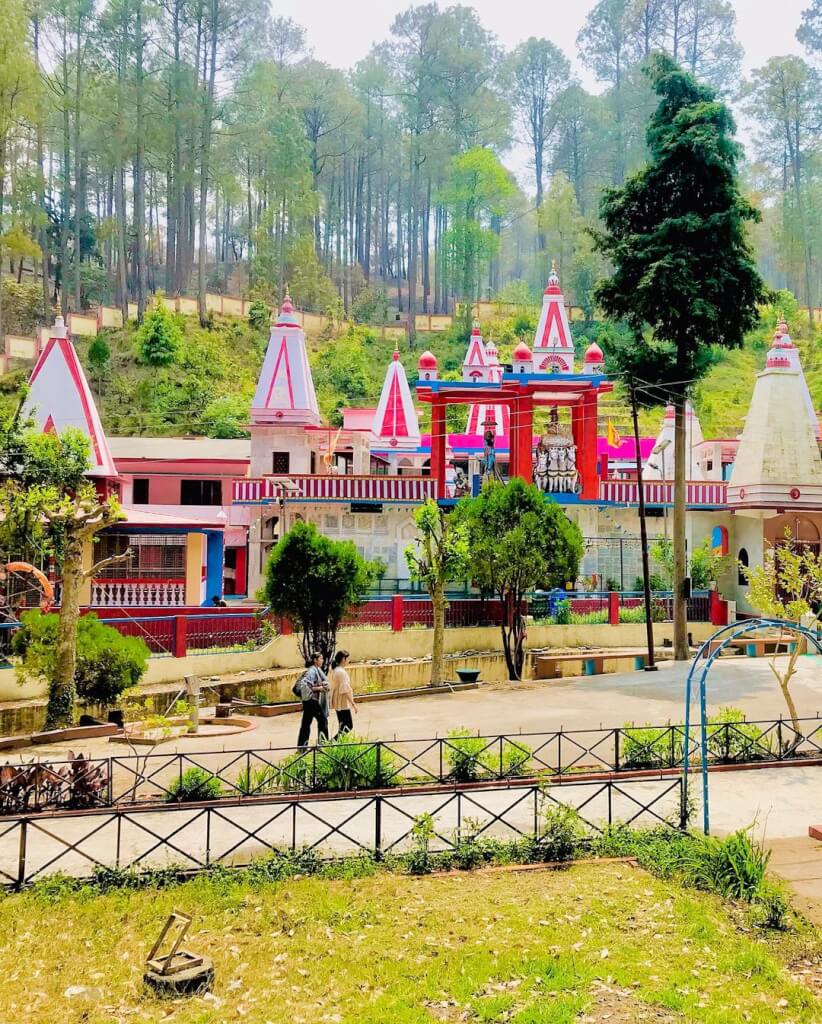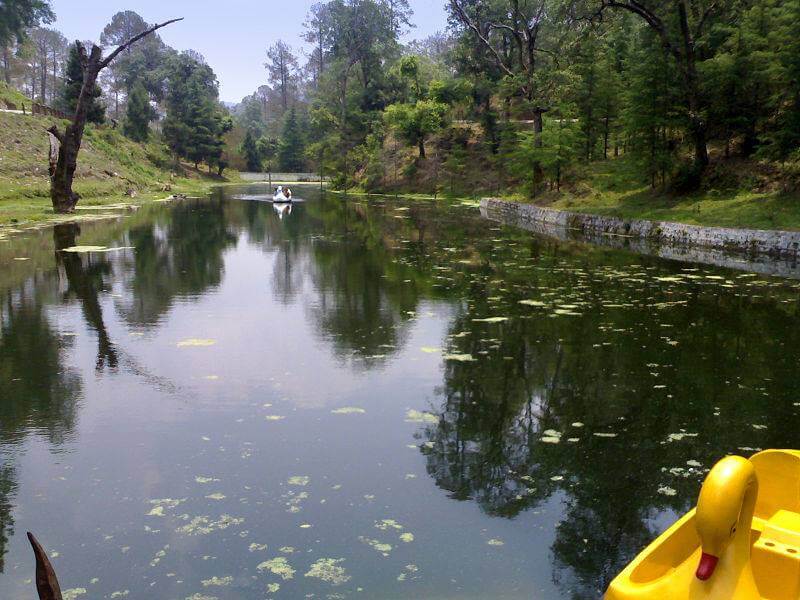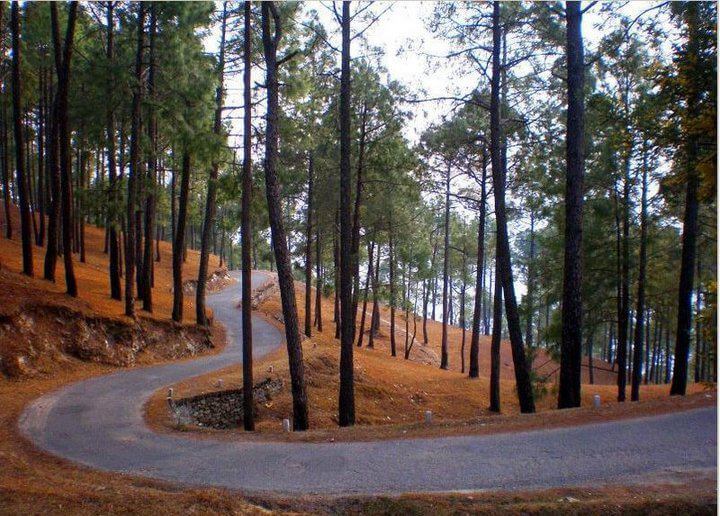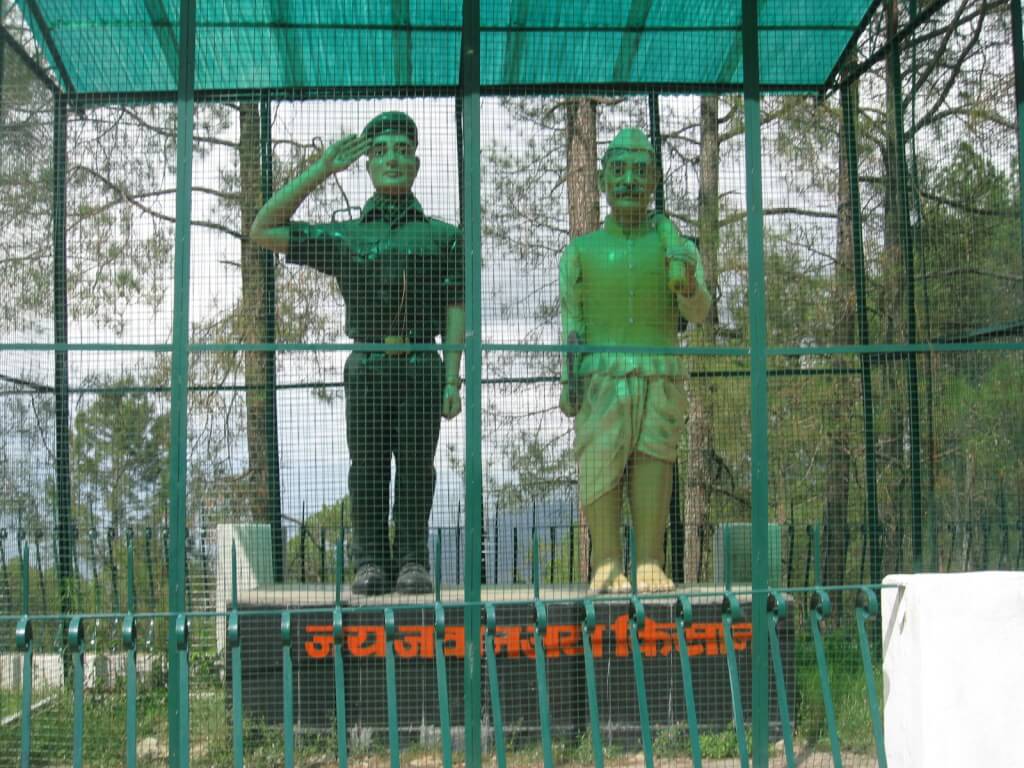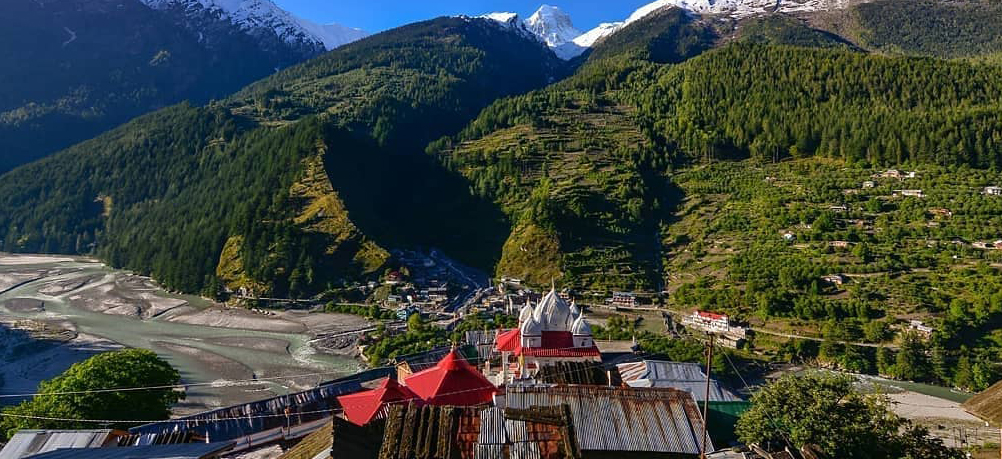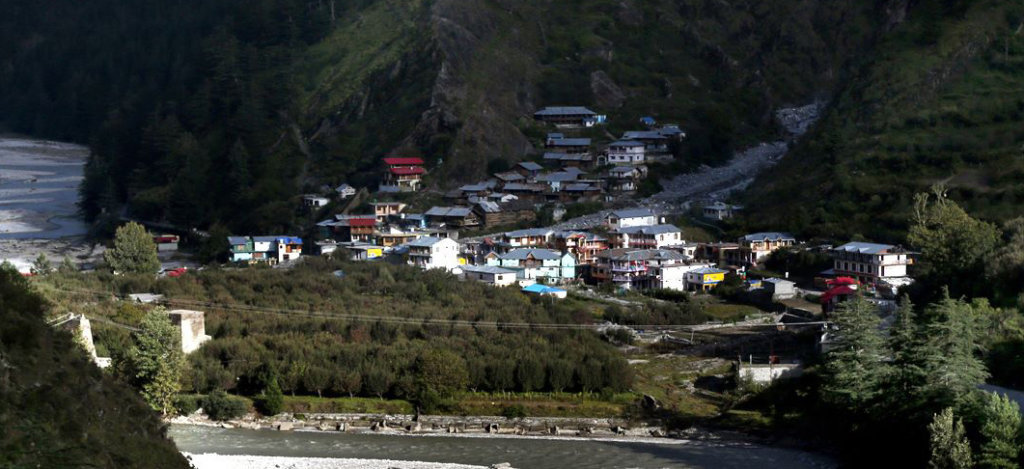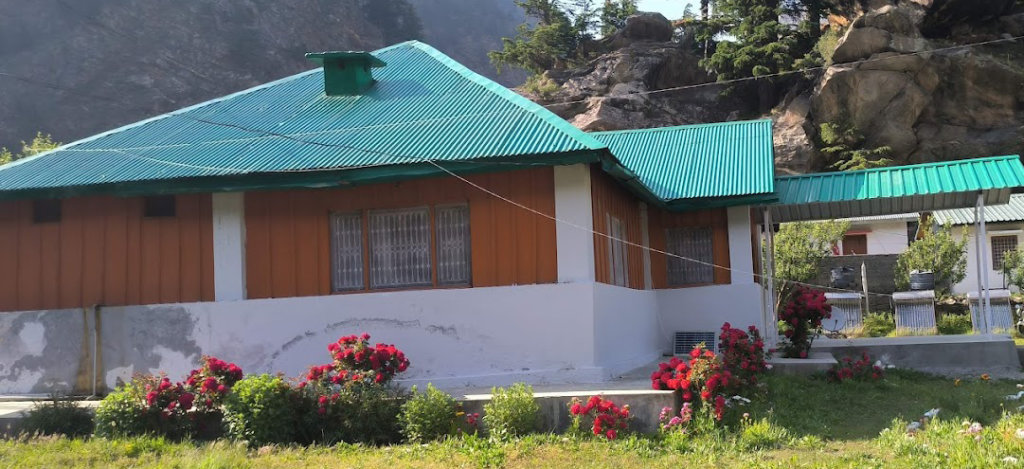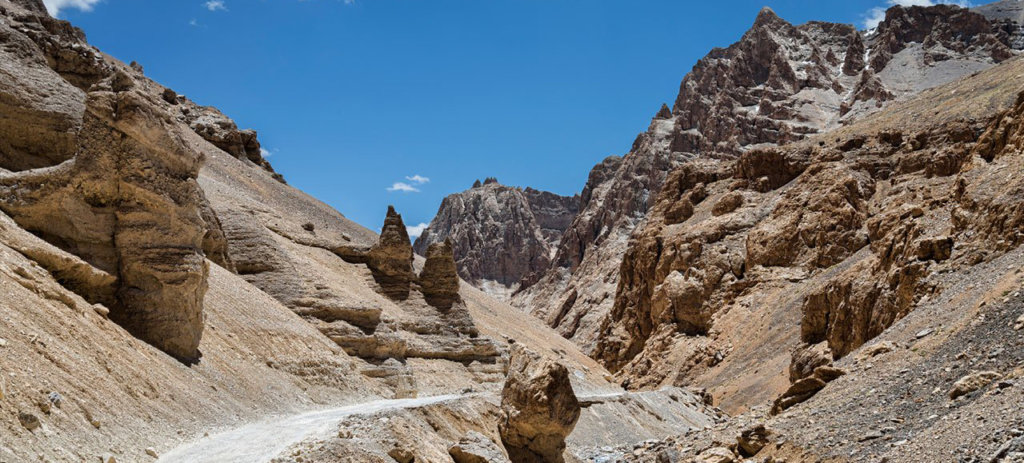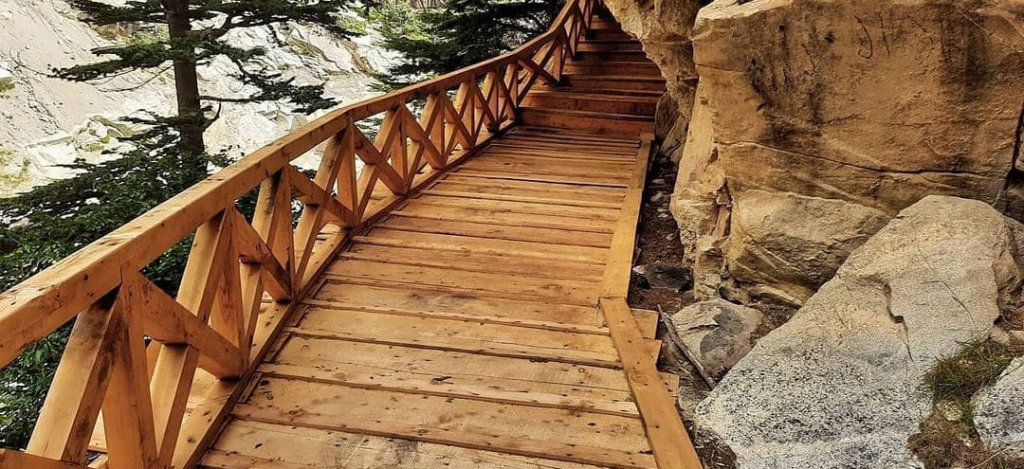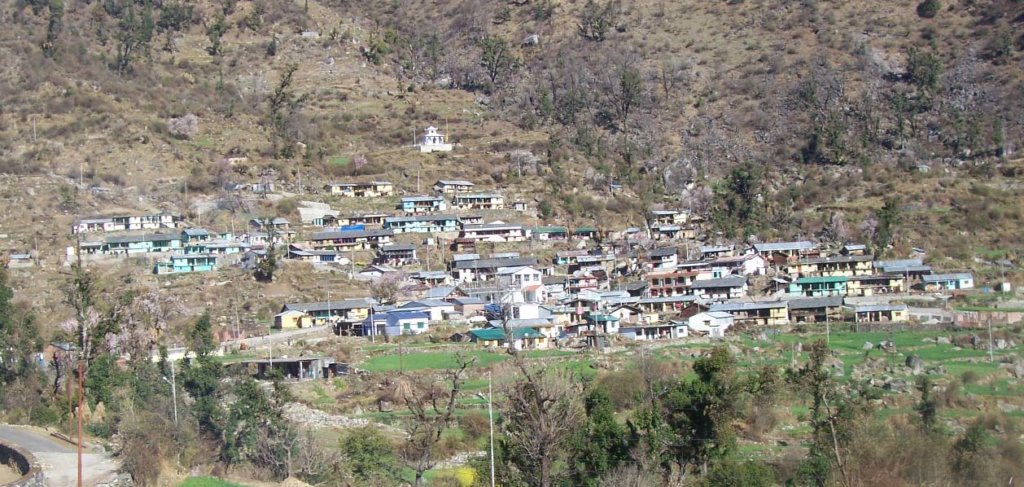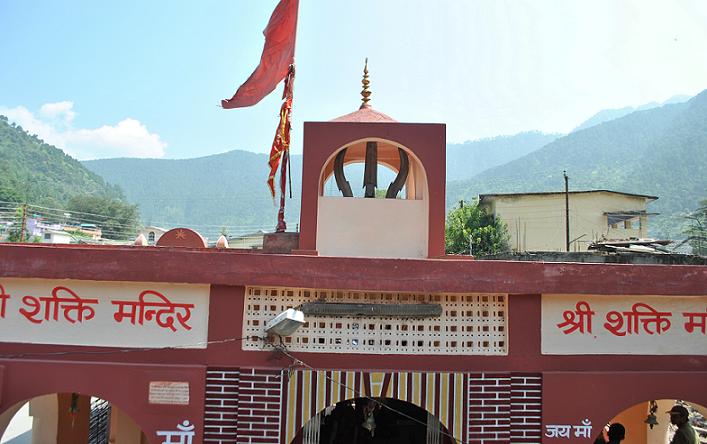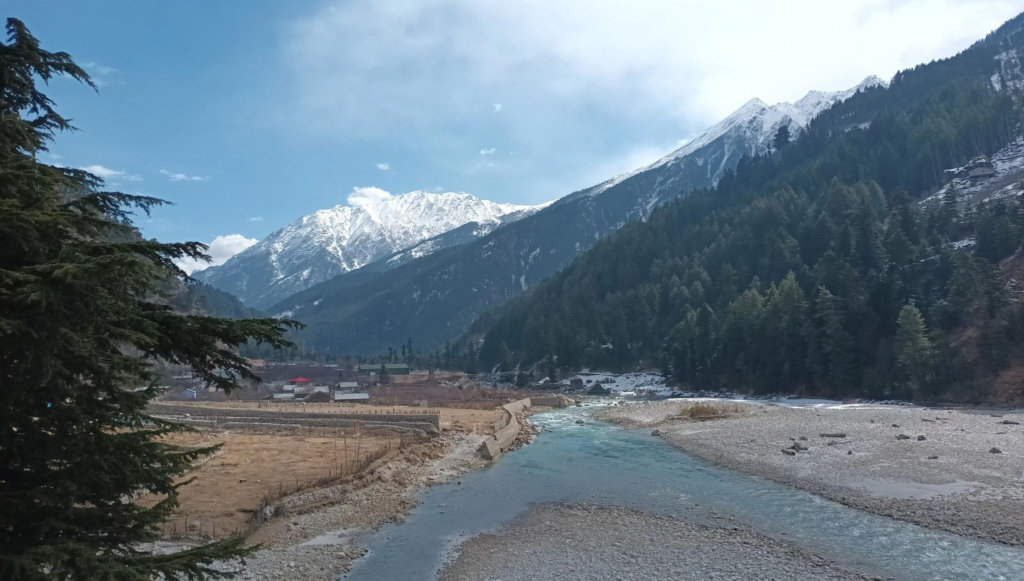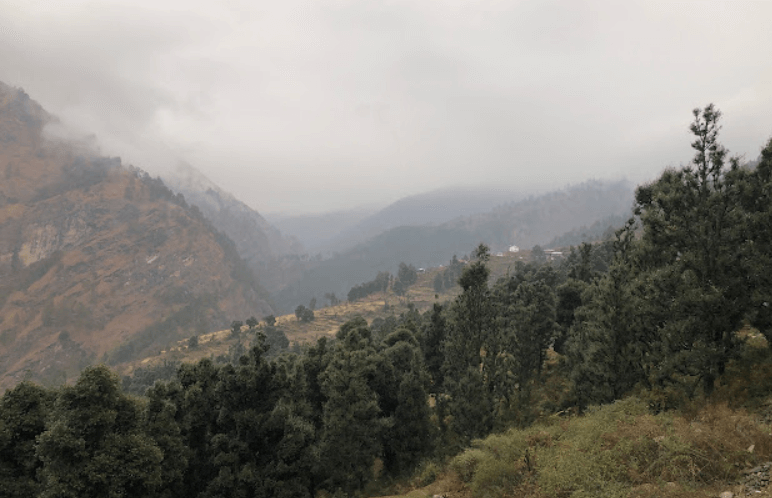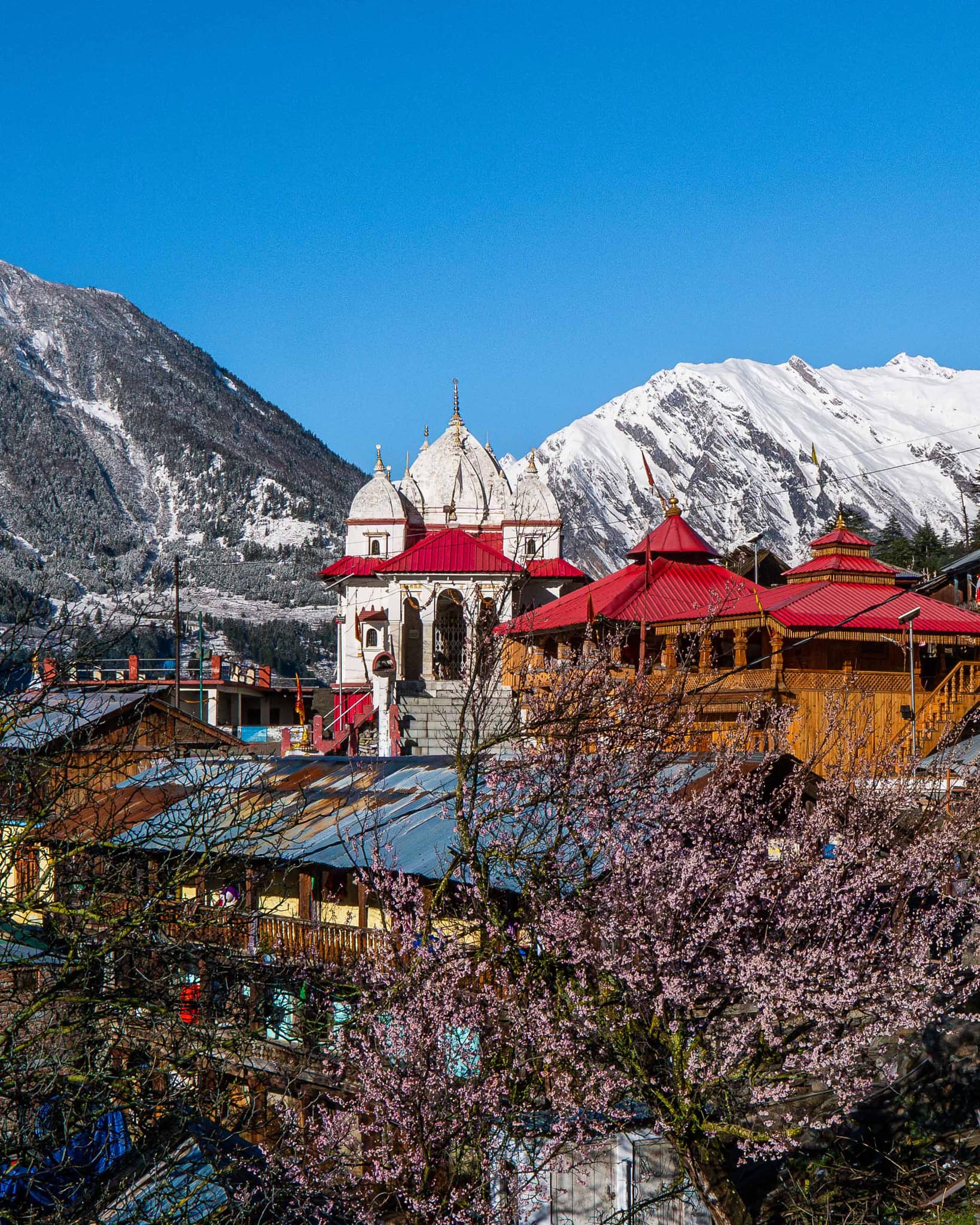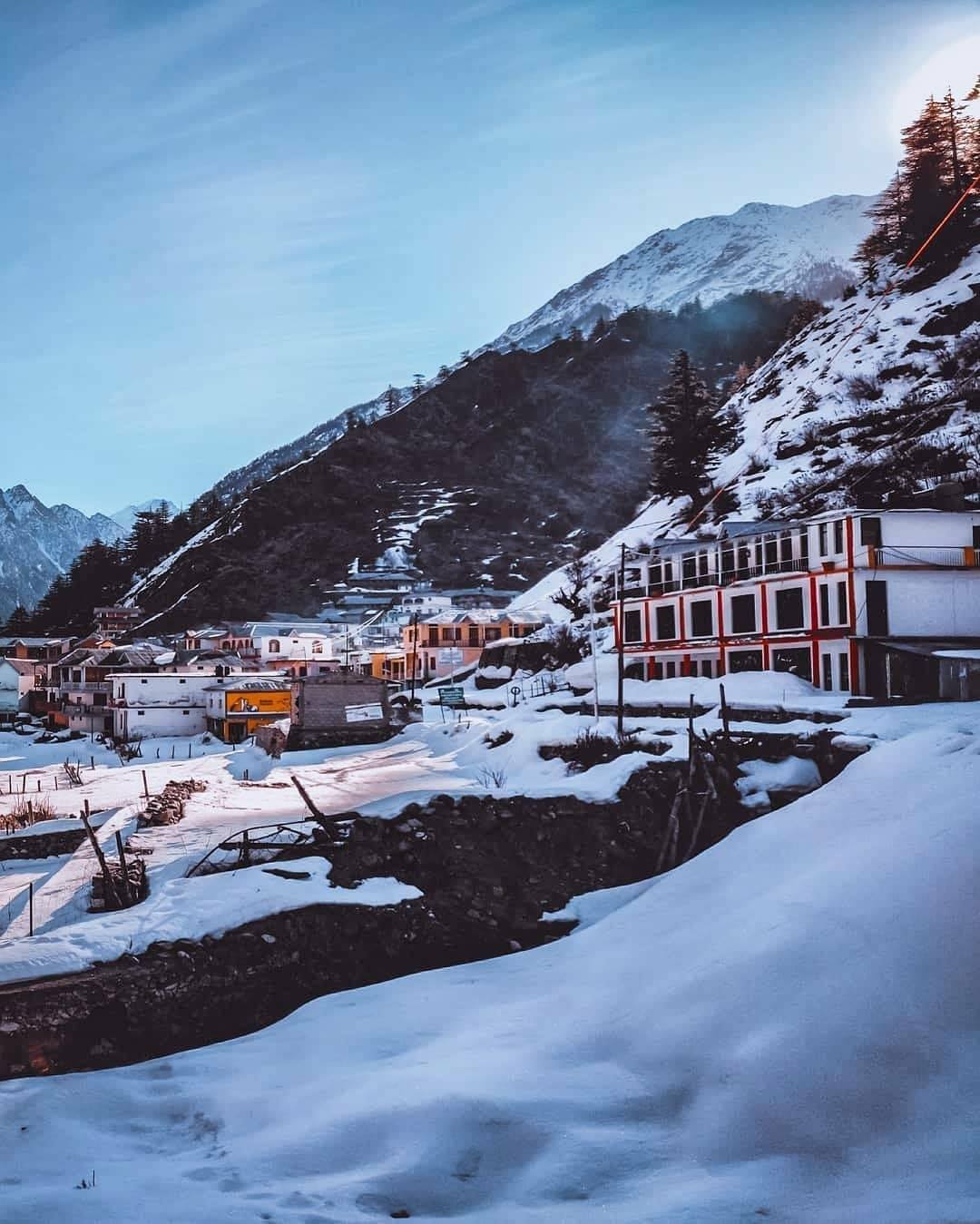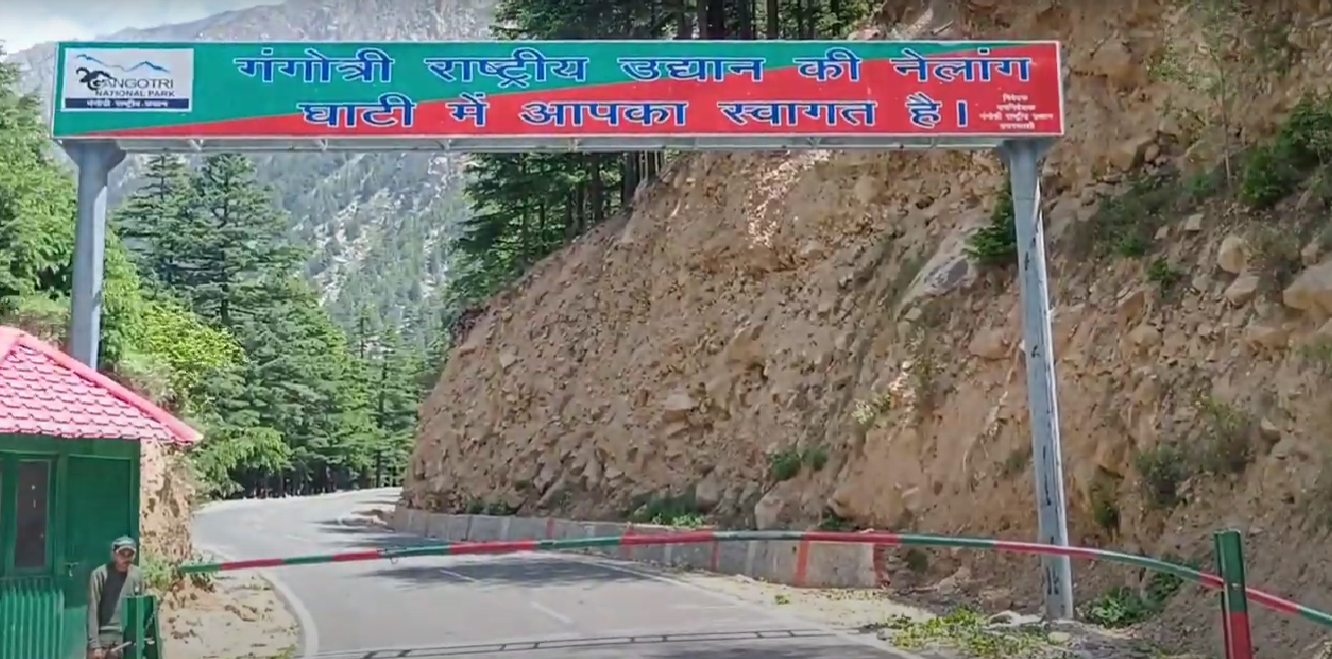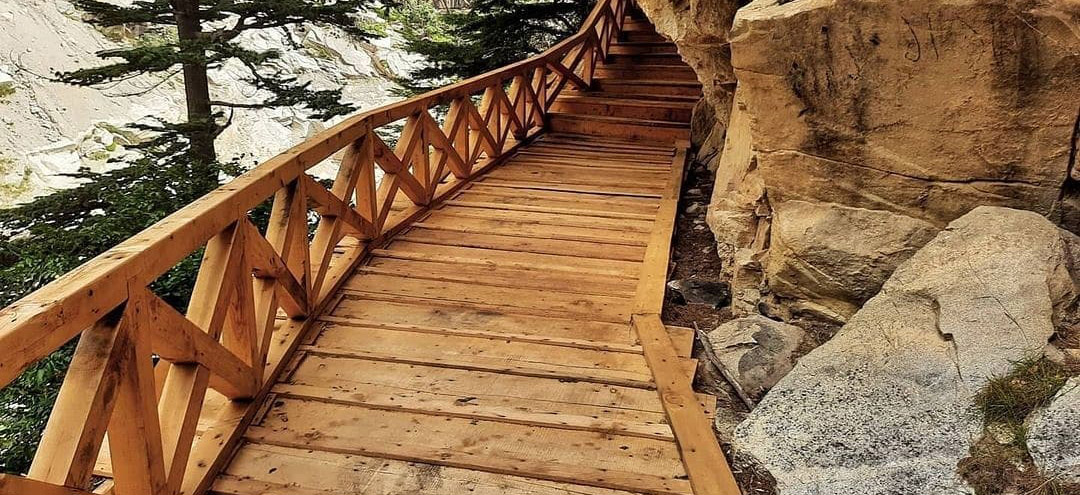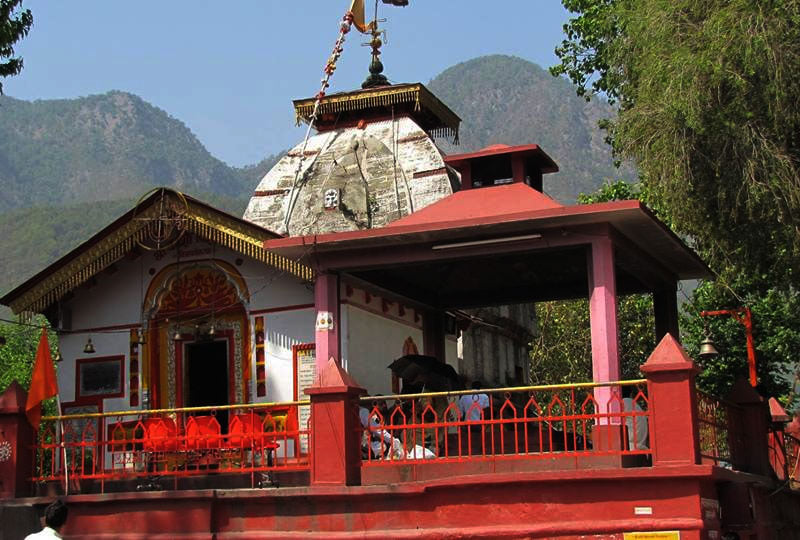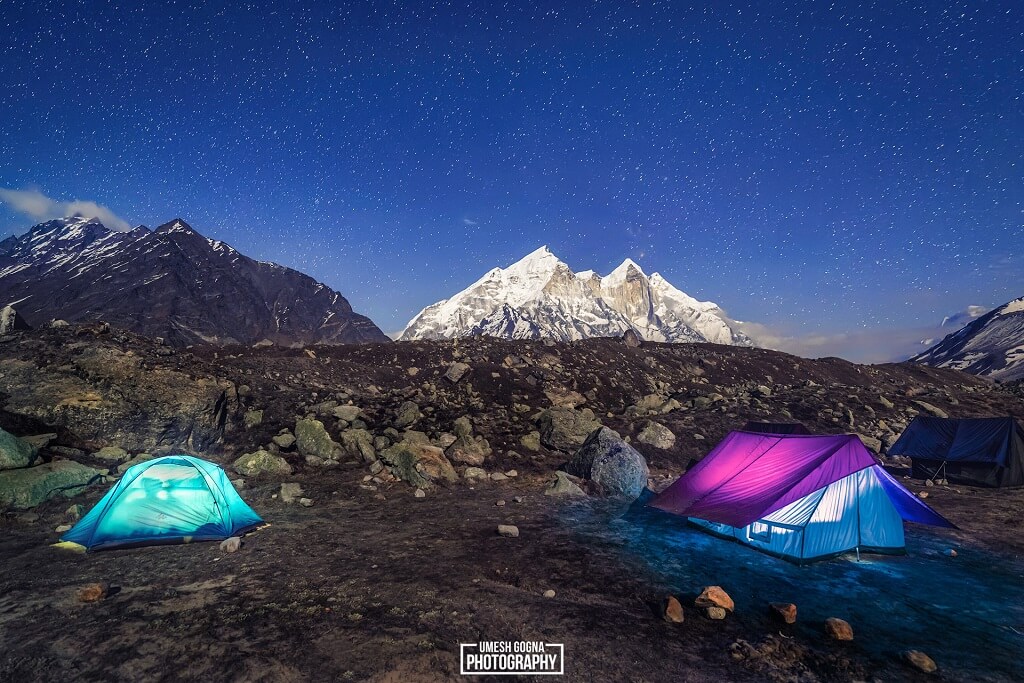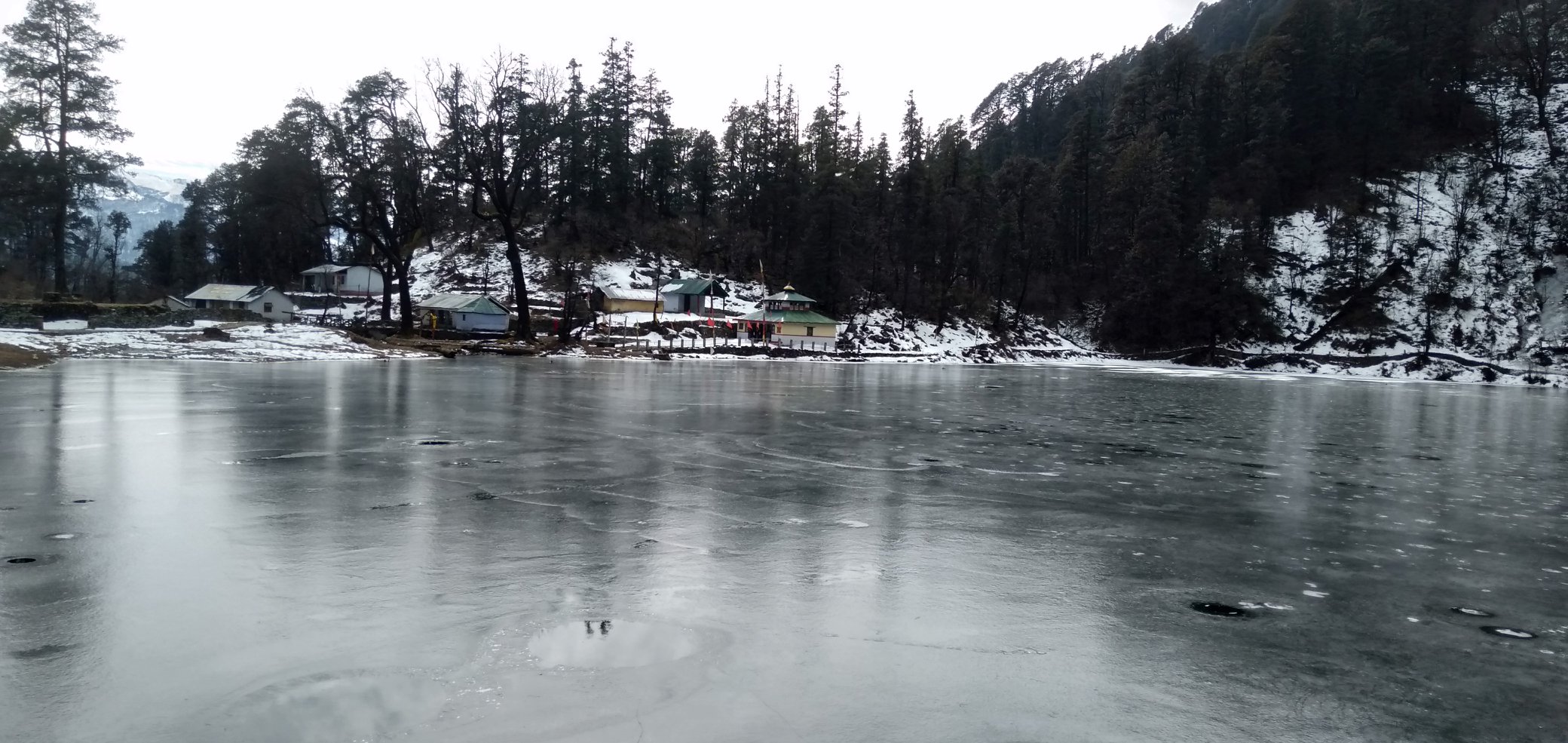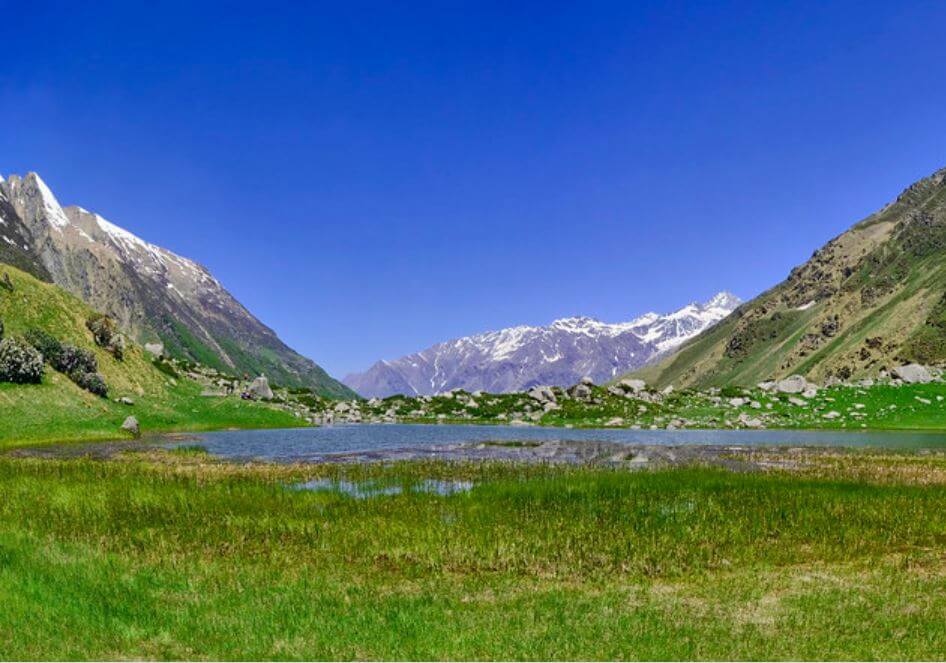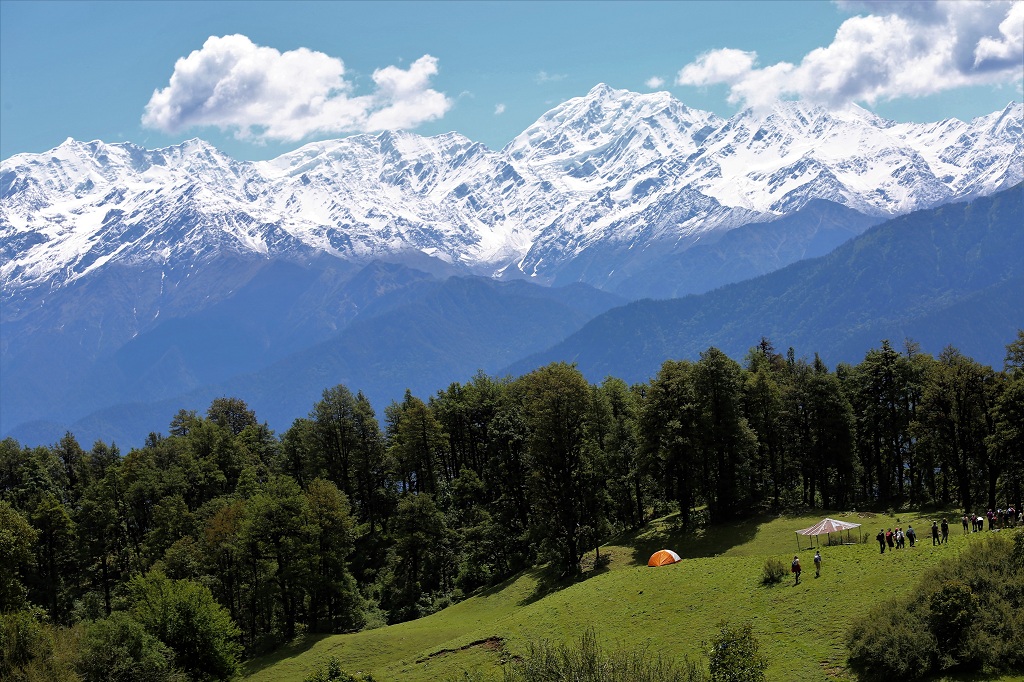Ranikhet is a beautiful hill station in Uttarakhand, India, sitting about 6,132 feet above sea level. Its name means “Queen’s Meadow,” and it’s famous for its stunning views of the Himalayas. Originally a British cantonment, Ranikhet has a charming mix of colonial buildings and lush greenery. The town is surrounded by pine, oak, and deodar forests, creating a peaceful atmosphere that attracts nature lovers. Ranikhet is also known for having one of the highest golf courses in Asia, providing a unique experience for visitors.
Aside from its natural beauty, Ranikhet has historical sites like the Jhula Devi Temple, Chaubatia Gardens, and the Kumaon Regimental Centre Museum. You can enjoy activities such as trekking, bird watching, and exploring local markets.
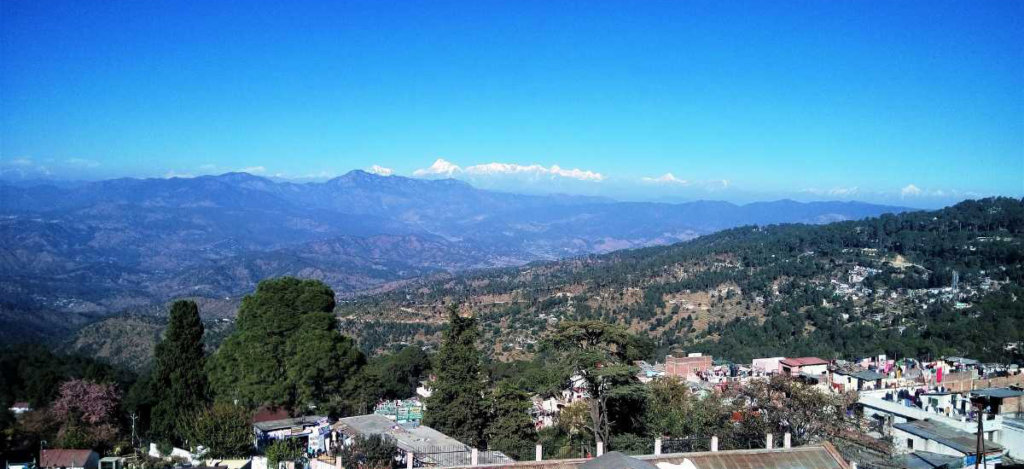
| Location | Almora |
| Famous For | Hill Station, Trekking, |
| Altitude | 1829 mtrs |
| Railway Station /Nearest Airport Pantnagar | 96 kms / 115 kms |
History of Ranikhet
The area surrounding Ranikhet has a long history; Hindu mythology and scriptures make reference to it. It was believed to be part of the Kumaon region. Ranikhet and its surrounding areas were under the rule of the Katyuri dynasty, a group of ancient rulers who held sway in the Kumaon region from the 7th to the 11th centuries.
British Influence: During the British colonial era, Ranikhet became an important cantonment area due to its strategic location. The British developed it as a military base and a retreat for their soldiers due to its pleasant climate. After India gained independence in 1947, Ranikhet continued to be an important military center. The town saw gradual development in terms of tourism and infrastructure.
Tourism: Ranikhet’s scenic beauty, pleasant weather, and tranquility have made it a popular tourist destination. Travelers visit to enjoy the Himalayan views, serene environment, and explore attractions like Chaubatia Gardens, Jhula Devi Temple, and more.
Local Culture: Ranikhet has a rich Kumaoni culture, with influences from its historical past, reflected in its art, cuisine, and festivals.
Mythology About Ranikhet
Ranikhet, a picturesque hill station in Uttarakhand, India, has its share of folklore and local mythology that add to its charm and history.
One popular legend revolves around the name “Ranikhet,” which translates to “Queen’s Meadow.”
The region is also associated with local myths and beliefs deeply rooted in the Kumaoni culture.The temples and sacred sites scattered across the area reflect these beliefs, with devotees and pilgrims visiting them for blessings and spiritual experiences.
The beauty of the place, combined with its rich cultural heritage, continues to fascinate both locals and visitors alike, keeping the spirit of mythology and folklore alive in this serene hill station.
Activities In Ranikhet
Trekking and Hiking: There are several trails around Ranikhet suitable for trekking and hiking enthusiasts.
Exploring Wildlife: The area is home to various species of birds and animals, making it a good spot for birdwatching and wildlife enthusiasts.
Scenic Views: It offers breathtaking views of the Himalayas, including Nanda Devi, Trishul, and Panchachuli peaks.
Pine and Oak Forests: The town is surrounded by lush pine, oak, and deodar forests, adding to its natural beauty.
Golf Course: Ranikhet boasts one of the highest golf courses in Asia, offering scenic views.
How To Reach Ranikhet
By Road
From Delhi: Ranikhet is about 350 kilometers away from Delhi.The journey takes around 8-9 hours depending on the traffic and road conditions.
From Nainital: Ranikhet is about 60 kilometers away from Nainital. You can hire a taxi or take a bus from Nainital to reach Ranikhet.
Local transport within Ranikhet includes taxis, auto-rickshaws, and buses.
By Train
The closest railway station to Ranikhet is Kathgodam Railway Station (KGM), which is approximately 96 kilometers away.From Kathgodam, you can hire a taxi or use a bus to reach Ranikhet.
By Air
The nearest airport to Ranikhet is the Pantnagar Airport (PGH), located around 115 kilometers away.
Frequently Asked Questions Registrations
1. Where is Ranikhet located?
Ranikhet is located in the Almora district of Uttarakhand, India.
2. What is Ranikhet and where is it altitude ?
- Ranikhet is a hill station and cantonment town in the Almora district. Ranikhet is situated at an altitude of approximately 1,869 meters (6,132 feet) above sea level.
3. When is the best time to visit Ranikhet?
The best time to visit Ranikhet is during the summer months, from March to June, when the weather is pleasant and ideal for sightseeing. The monsoon season (July to September) should be avoided due to heavy rainfall, which may lead to landslides.
4. What are the accommodation options in Ranikhet?
Ranikhet offers a variety of accommodation options, including hotels, resorts, guesthouses, and homestays.
5. What are the popular tourist attractions in Ranikhet?
- Ranikhet is known for its natural beauty and colonial heritage. Some popular tourist attractions include Chaubatia Gardens, Jhula Devi Temple, Haidakhan Babaji Temple, Binsar Mahadev Temple, and the Kumaon Regimental Centre Museum.
Ranikhet Picture


